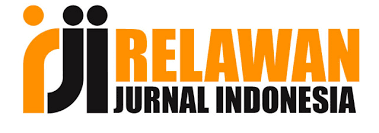Quick Navigation
Online Submission
Submission Guideline
Author Guidelines
Article Template
Editorial Board
Focus & Scope
Peer Review Process
List of Reviewers
Publication Ethics
Copyright & Plagiarism
Article Processing Fee
The Geopark Gazette publishes scientific articles on community service and policy analysis focusing on the fields of The Geopark development strategy (SDGs):
The Geopark Gazette only publishes scientific articles from community service activities or programs. Our journal does not accept research articles.
To assist you in preparing your manuscript, we provide formatting templates. Word templates are available for this journal. Please download the template article
Abstract written in one paragraph in English and the Indonesian language (in italics). The abstract should be no longer than 250 words. It gives a summary of the content of the main objective, the methods, the results obtained, and major conclusions. The keywords consist of no more than 5 important words representing the content of the article and can be used as internet searching words and arranged in alphabetical order.
The introduction section contains the background of the community service activities or program, why the issues need to be done, provides state-of-the-art or more specific statements about the aspects of the problem already studied by other people, a very specific statement giving the purpose/objectives of the program, and optional statements that give a value or justification for carrying out the program. Write your references using APA style. Here are some examples: to cite a paper with one author (Wahyudi, 2016), and a paper with two authors (Anisa & Astuti, 2019). a paper with more than two authors (Ghavifekr et. all, 2016). The name in the citation is only the last name.
The methods section should explain detailed information about location, time, sample or population, procedures, and how the data is to be collected and analyzed. The number of methodology subsections can be adjusted.
Results and Discussions contain results obtained by the author during the community service activities. The results of the programs are submitted in advanced which continues by doing the discussion. The discussions are presented systematically from general to specific. The data can be presented with tables or figures. Results and discussions must also interconnect with the theory that is used. Avoid excessive use of citations and discussion of published literature.
The conclusion contains the main points of the article. Conclusions should not repeat what has been written in the Results and Discussion section, but discuss important results, applications, and developments of the community service programs carried out. This section should also be able to show whether the program objectives can be achieved. Conclusions are written in description paragraph form. Avoid using bulleted lists.
This section gives appreciation to individuals and organizations that assist the author. Acknowledgments to sponsors and financial support are also included in this section.
Every document cited in this article should be included in this section. The number of cited references is at least 10, with 80% of them being primary references published at least in the last 15 years. Primary references mean journal articles, book chapters, patents, and seminar/proceeding articles. As for what is meant by secondary references are textbooks and handbooks.
References of the manuscript using APA style. Here are some examples:
Afrianto. (2018). Being a Professional Teacher in the Era of Industrial Revolution 4. 0: Opportunities, Challenges and Strategies for Innovative Classroom Practices. English Language Teaching and Research, 2(1), 1-13.
Albantani, A. M., & Madkur, A. (2017). Musyahadat Al Fidyu: Youtube-Based Teaching and Learning of Arabic as Foreign Language (AFL). Dinamika Ilmu, 17(2), 291-308.
McKibbin, B. (2007). Deep economy: The Wealth of Communities and The Durable Future. New York: Times Book/Henry Hold and Co
Panitch, L., & Gindin, S. (2012). The Making of Global Capitalism: The Political Economy of American Empire. London: Verso.
Pigg, K. E., & Bradshaw, T. K. (2003). Catalytic Community Development: A Theory of Practice for Changing Rural Society. In D. L. Brown & L. E. Swanson (Eds.), Challenges for Rural America in The Twenty-First Century (pp. 385-396). Pennsylvania State University Press.
Law Number 23 of 2011 concerning Zakat Management. November 25, 2011. State Gazette of the Republic of Indonesia Year 2011 Number 115. Jakarta.
Law Number 5 of 1984 concerning Industry. June 29, 1984. State Gazette of the Republic of Indonesia Year 1984 Number 22. Jakarta.
Choiri, A. (2021). Pemberdayaan Pemulung Melalui Pengelolaan Sampah Plastik di Medayu Utara Rungkut Surabaya [Thesis]. UIN Sunan Ampel Surabaya, Surabaya.
Erizal, Y. (2011). Analisa Pelaksanaan Kemitraan Anak Angkat Bapak Angkat (ABA) dalam Usaha Agribisnis Kelapa Sawit di PT. GMP Kec. Pasaman Kabupaten Pasaman Barat [Thesis]. University if Andalas, Padang.
Jenkis, R. (2018, January 7). Generation Z vs. Millennials: The 8 Differences You Need to Know. HR Daily Advisor. Retrieved from https://hrdailyadvisor.blr.com/2017/09/25/generation-z-vs-millennials-8-differences-need-know/
Maritime Security Agency of the Republic of Indonesia. (2021, June 25). Amerika Serikat dan Indonesia Bangun Pusat Pelatihan Maritim. Maritime Security Agency of the Republic of Indonesia. Retrieved from https://bakamla.go.id/publication/detail_news/amerika-serikat-dan-indonesia-bangun-pusat-pelatihan-maritim

![]()
![]()
![]()
 Editorial office of The Geopark Gazette
Editorial office of The Geopark Gazette
Pusat Studi Geopark Universitas Bakrie
Jl. HR Rasuna Said Kav. C-22, Rasuna Epicentrum, Kuningan
Jakarta Selatan 12920. email: geopark.gazette@
